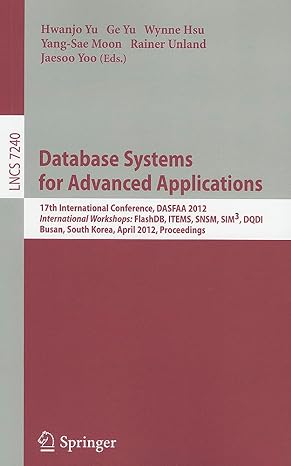Question
1-Download/ install and run Glimmer3 ( a prokaryotic prediction tool/programming Gene finding Algorithm) 2-Test this Glimmer3 gene finder on a plasmid of the model organism
1-Download/ install and run Glimmer3 ( a prokaryotic prediction tool/programming Gene finding Algorithm) 2-Test this Glimmer3 gene finder on a plasmid of the model organism E. coli O157:H7, The test data can be downloaded from GenBank, accession AB011549.2. 3-Compare the gene prediction with the ''official'' annotation on Genbank, 4-And display the results of the comparison as a web page. 5-Write a CGI script to read both the GenBank (reference) annotation and predicted output from Glimmer3 tool, 6-compare their predicted coordinates and 7-Populate these within an HTML5-compliant template. The output should include summary information at the top, such as: Count of genes in the reference annotation Count of predicted genes Count of genes with exact matching coordinates between reference and prediction (5'' and 3'' agreement) Count of genes with 5'' agreement but 3'' disagreement Count of genes with 5'' disagreement but 3'' agreement Count of genes predicted with no overlap to a reference gene -Table showing all gene coordinates of the reference annotation and, beside each, the corresponding (overlapping) predicted coordinates from Glimmer3 tool. -Each cell of this table that represents a coordinate from the Glimmer3 gene predictor should have one of the following class attributes applied to it, ''agrees'' or ''disagrees'', when compared to the reference coordinates. -. When performing these comparisons, make sure to: 1-Take into account the strand of the genes involved, else your 5'' and 3'' agreement calculations will be off. 2-Also be sure to use the CDS features within the genbank file for your comparison, as a single gene in prokaryotes can have multiple CDS as children. What you will need is: 1-You will need the GenBank entry, from which you can parse out the gene coordinates, 2-And the FASTA version of the DNA molecule itself to be analyzed using Glimmer3 gene finder. 3-Run it on the E. coli plasmid, saving the results into HTML file.
Step by Step Solution
There are 3 Steps involved in it
Step: 1

Get Instant Access to Expert-Tailored Solutions
See step-by-step solutions with expert insights and AI powered tools for academic success
Step: 2

Step: 3

Ace Your Homework with AI
Get the answers you need in no time with our AI-driven, step-by-step assistance
Get Started


